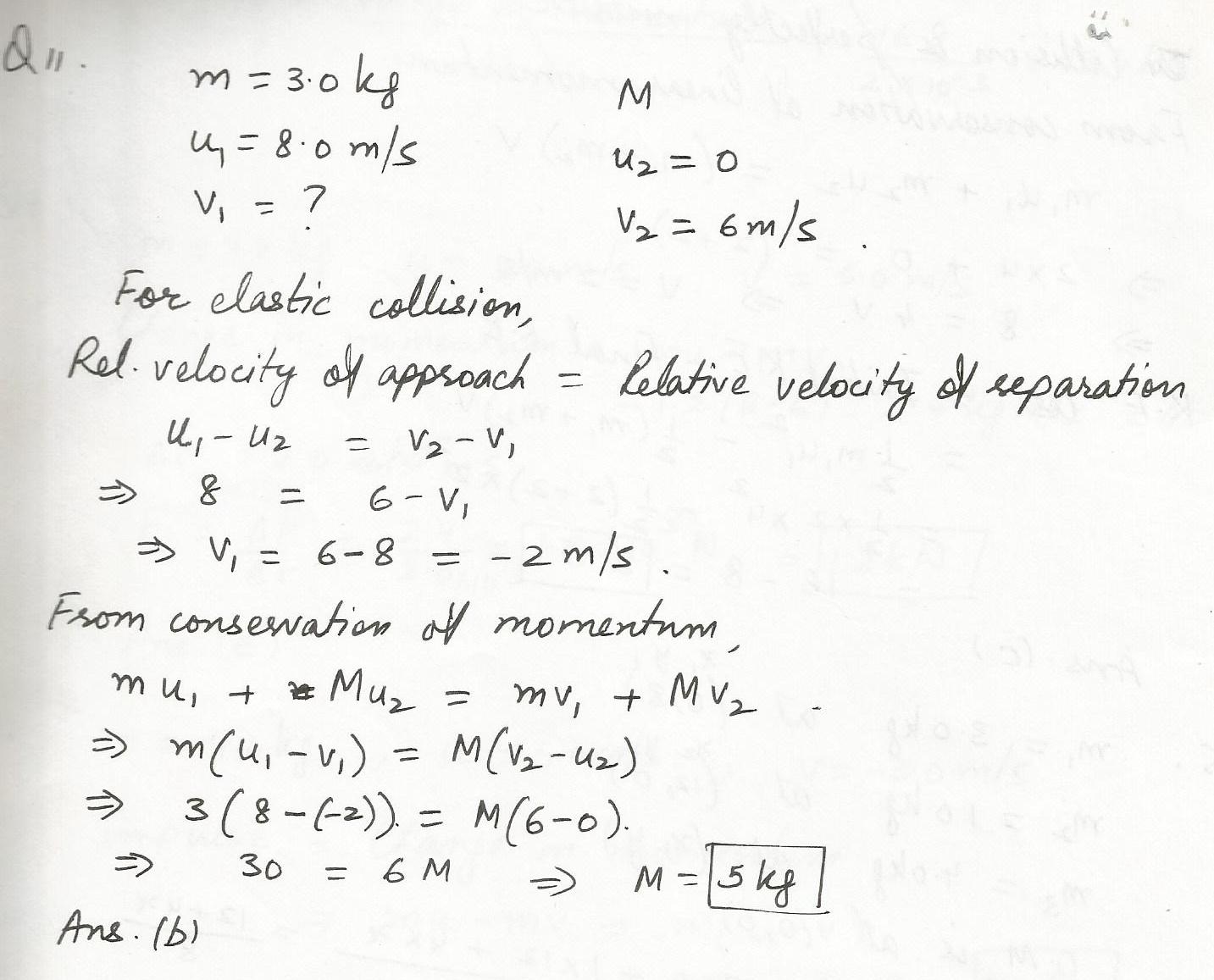Physics Force & Laws Of Motion Level: Misc Level
Two blocks weighing 250 N and 350 N respectively, are connected by a string that passes over a massless pulley as shown.
Calculate the tension in the string;
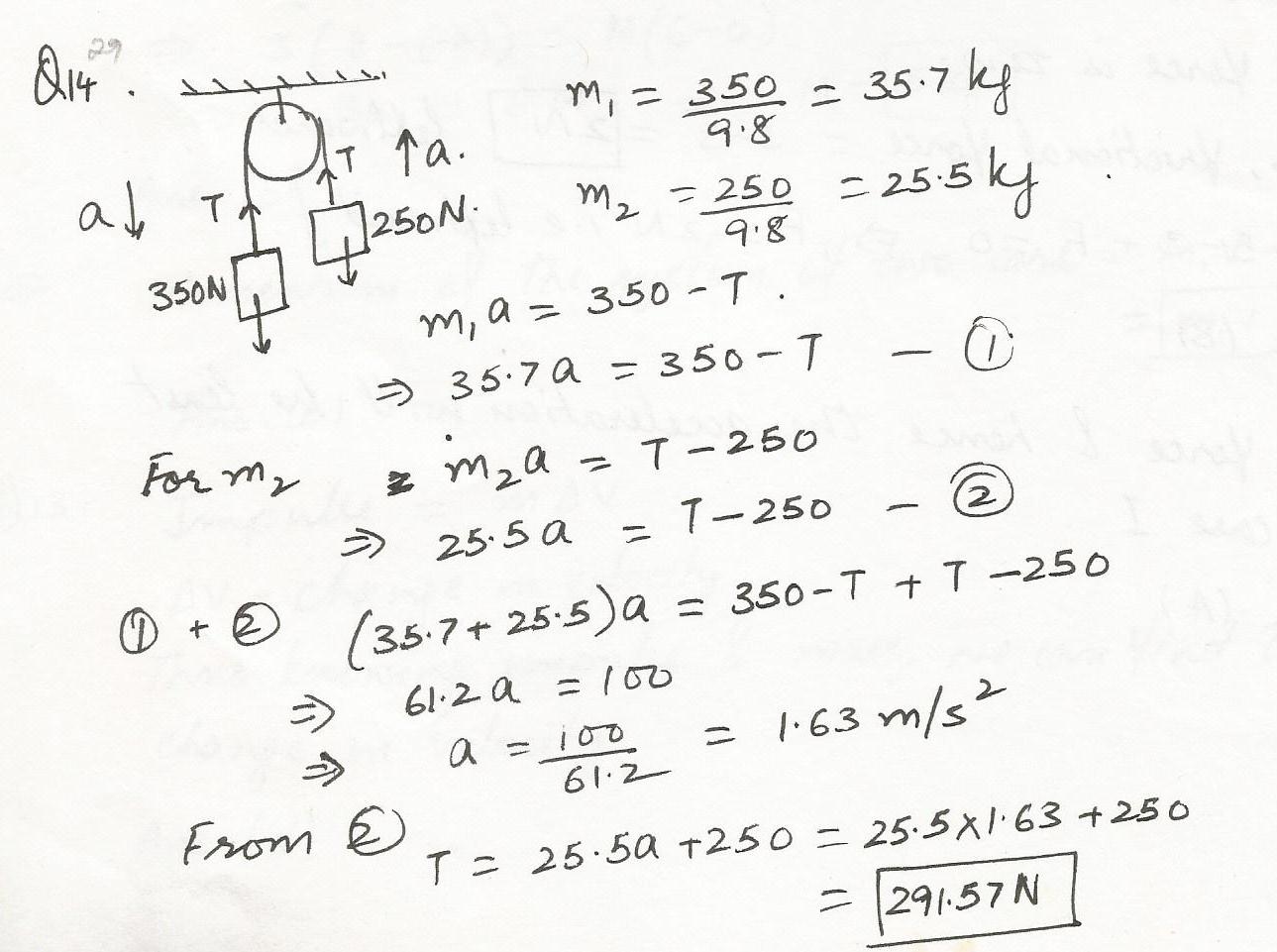
Physics Force & Laws Of Motion Level: Misc Level
The'' reaction'' force does not cancel the action'' force because;
a. the action force is greater than the reaction force
b. they act on different bodies
c. they are in the same direction
d. thereaction force exists only after the action force is removed
e. the reaction force is greater than the action force

Physics Kinematics Level: Misc Level
An 1.5 N ball is thrown at an angle of 30% above the horizontal with an initial speed of 12 m/s. At its highest point, the net force on the ball is;
a. 9.8 N, 30% below horizontal
b. zero
c.9.8 N, up
d. 9.8 N, down
e. 1.5 N, down

Physics Force & Laws Of Motion Level: Misc Level
A heavy wooden block is dragged by a force e along a rough steel plate, as shown below for cases. The magnitude of the applied force c is the same for both cases. The normal force in (ii) as compared with the normal force in (i) is;
a. the same
b.greater
c. less
d. leass for some angles of the incline and greater for
d. others
e. less or greater, depending on the magnitude of the applied force c.
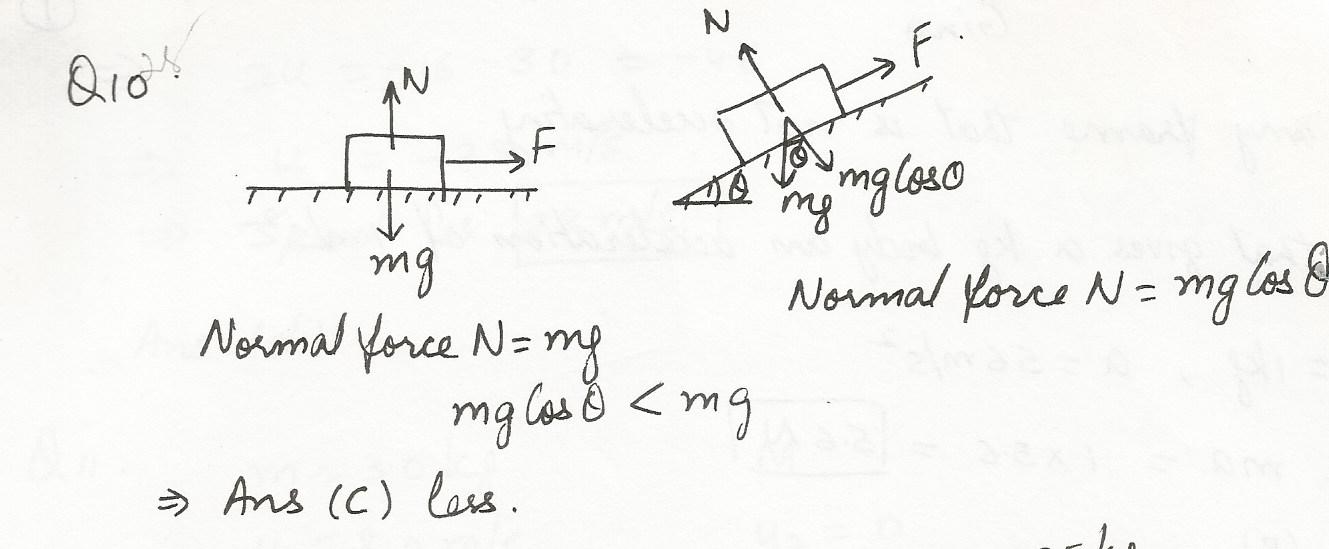
Physics Force & Laws Of Motion Level: Misc Level
Mass differs from weight in that;
a. all objects have weight but some lack mass
b. weight is a force and mass is not
c. the mass of an object is always more than its weight
d. mass can only be expressed in the metric system
e. there is no difference

Physics Force & Laws Of Motion Level: Misc Level
The inertia of a body tends to cause the body to;
a. speed up
b. slow down
c. resist any change in its motion
d. fall toward the Earth
e. decelerate due to friction

Physics Force & Laws Of Motion Level: Misc Level
The term" mass" refers to the same physical concept as;
a. weight
b. inertia
c. force
d, acceleration
e. volume
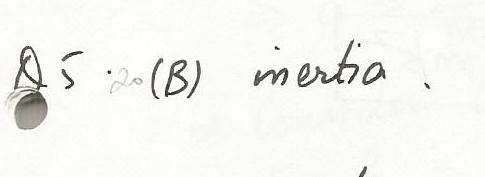
Physics Force & Laws Of Motion Level: Misc Level
Acceleration is always in the direction;
a. of the displacement
b. of the initial velocity
c.of the final velocity
d. of the net force
e. opposite to the frictional force

Physics Force & Laws Of Motion Level: Misc Level
The standard 1- kg mass is attached to a compressed spring and the spring is released. If the mass initially has an acceleration of 5.6 m/s2, the force of the spring has a
a. 2.8 N
b.5.6 N
c.11.2 N
d. 0
e. an undetermined amount

Physics Force & Laws Of Motion Level: Misc Level
An example of an inertial reference frame is;
a. any frame that is not accelerating
b. a frame attached to a particle on which no forces act
c. any frame that is at rest
d. a frame attached to the center of the universe
e. a frame attached to the Earth

Physics Center Of Mass Level: Misc Level
A 3.0-kg mass is positioned at (0,8.0), and a 1.0-kg mass is positioned at (12,0).What are the coordinates of a 4.0-kg mass which will result in the center of the system of three masses being located at the originn,(0,0)?
a.(-3.0,-6.0)
b.(-12,-8.0)
c.(3,0,60)
d.(600,300)
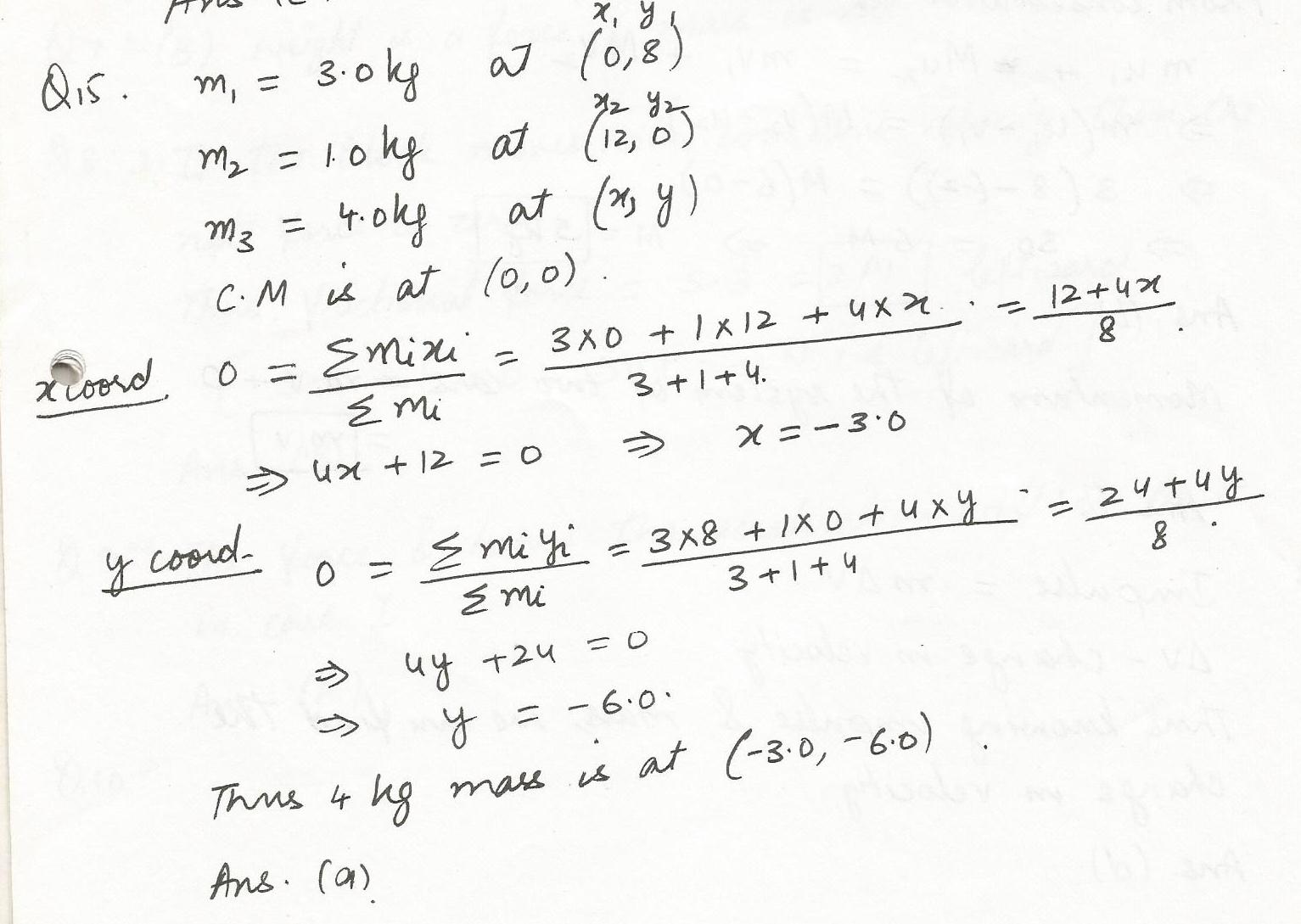
Physics Collisions Level: Misc Level
A 2.0-kg mass moving to the east at a speed of 4.0 m/s collides head-on in a perfectly inelastic collisision with a stationary 2.0-kg mass. How much kinetic energy is lost during this collision?
a.16J
b.4.0 J
c.8.0 J
d. zero
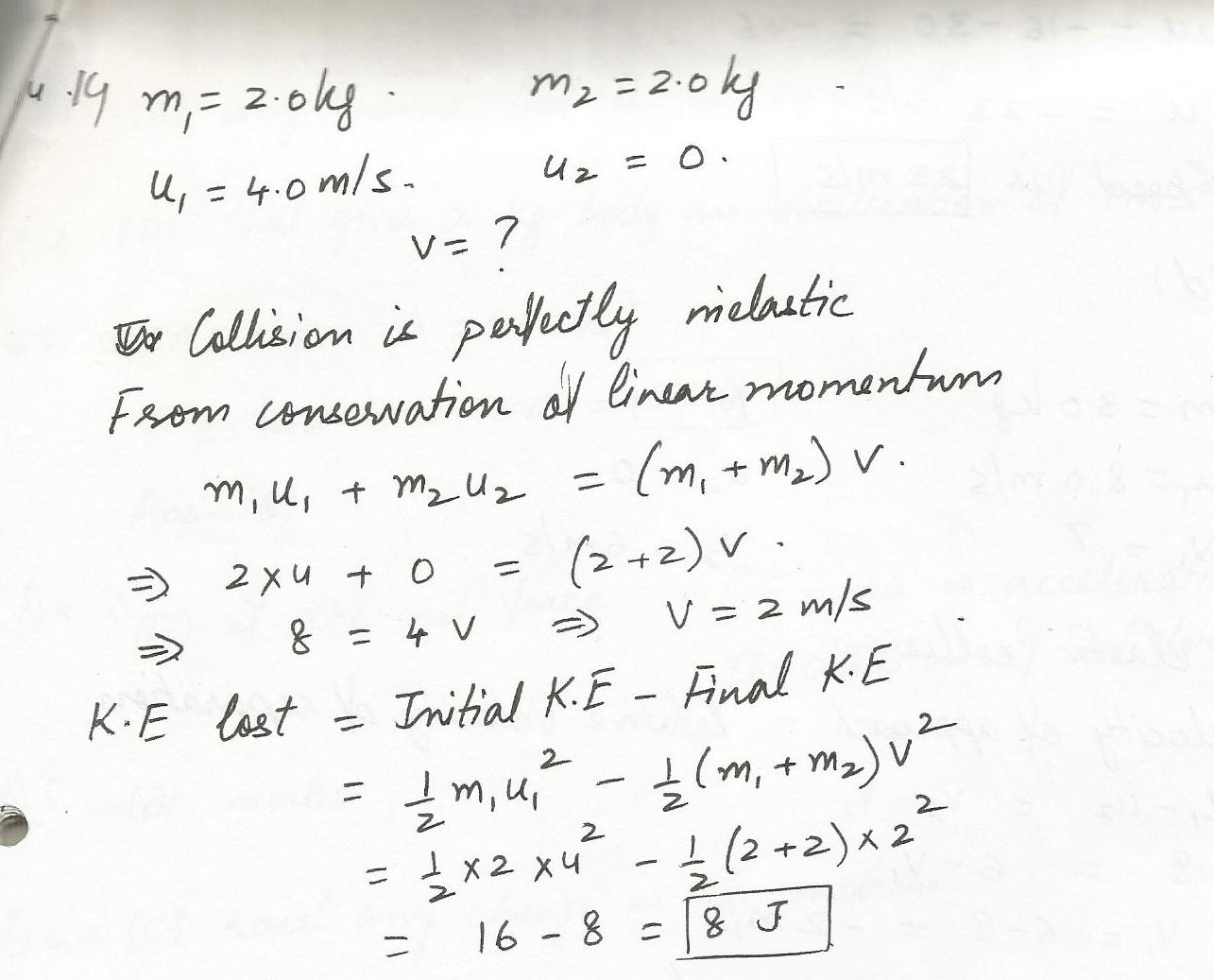
Physics Force & Laws Of Motion Level: Misc Level
If you know the impuise that has acted on a body of mass m you can calculate
a. its initial velocity.
b.its final velocity.
c.its final momentum.
d.the change in its velocity.
e.its acceleration during the impulse.

Physics Force & Laws Of Motion Level: Misc Level
A car of mass m1 traveling at velocity v passes a car of mass m2 parked at the side of the road. The momentum of the system of two cars is
a.0.
b.m1 v.
c. (m1-m2)v.
d.m1v
m1 +m2
e. (m1+m2) v.

Physics Collisions Level: Misc Level
A 3.0-kg object moving 8.0 m/s in the positive x direction has a one- dimensional elastic collision with an object (mass=M)initially at rest.After the collision the object of unknown mass has a velocity of 6.0 m/s in the positive x direction. What is M?
a. 7.5 kg
b.5.0 kg
c.6.0 kg
d.4.2 kg
e.8.0 kg
